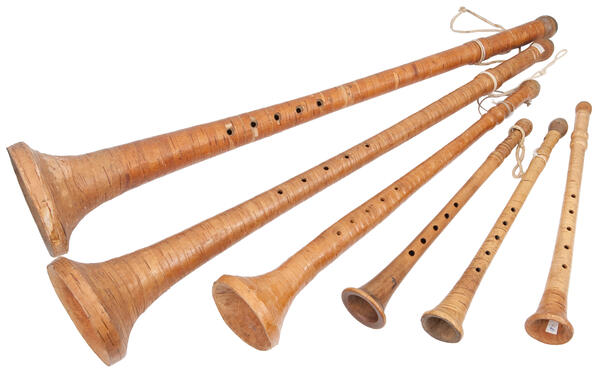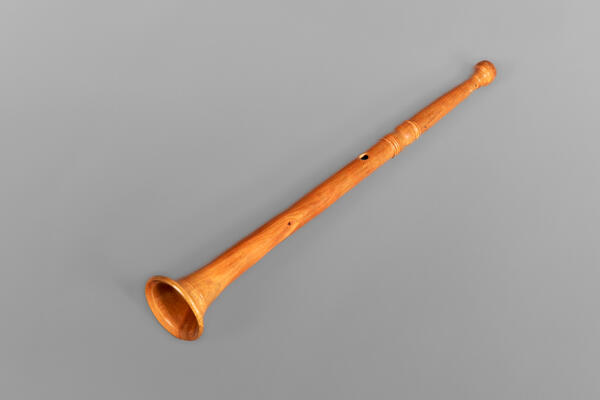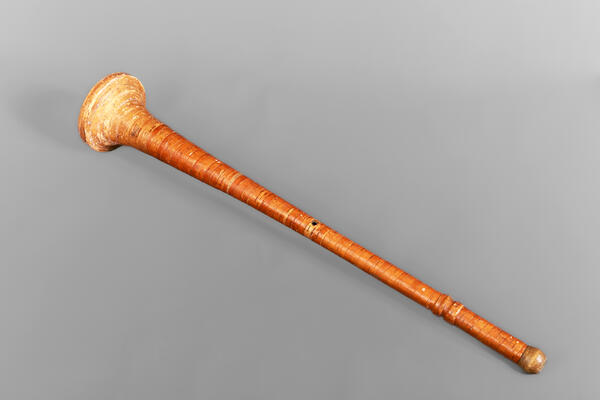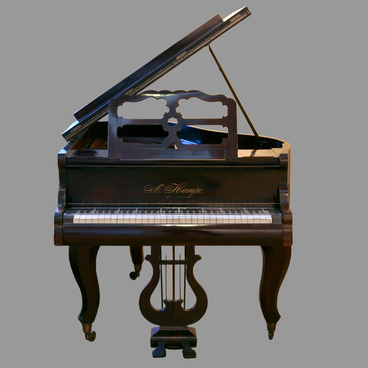The Russian shepherd’s horn known as the “rozhok” originated in the 17th century. Its tradition was developing alongside the art of singing. The rozhok is not mentioned in chronicles which mostly describe military campaigns, but is often referred to in lyrical songs, khorovod, and dance tunes.
The rozhok was one of the main instruments of the performers known as the skomorokhs. They had a saying, “Our riches and possessions are the gudok and the rozhok.” When the skomorokh art was banned in the mid-17th century, all gudoks were destroyed, but the rozhok survived. The church and the tsar himself believed that it was mainly used by shepherds in their work.
The sound of the rozhok accompanied peasant dances and khorovods. During the reign of Elizaveta Petrovna, and Catherine the Great, evening boat rides were organized on the Neva and the Fontanka rivers in Saint Petersburg, and the rowers sang tunes to the accompaniment of rozhoks.
Later, Alexander Pushkin dedicated the following lines in “Eugene Onegin” to this popular entertainment,
The rozhok was one of the main instruments of the performers known as the skomorokhs. They had a saying, “Our riches and possessions are the gudok and the rozhok.” When the skomorokh art was banned in the mid-17th century, all gudoks were destroyed, but the rozhok survived. The church and the tsar himself believed that it was mainly used by shepherds in their work.
The sound of the rozhok accompanied peasant dances and khorovods. During the reign of Elizaveta Petrovna, and Catherine the Great, evening boat rides were organized on the Neva and the Fontanka rivers in Saint Petersburg, and the rowers sang tunes to the accompaniment of rozhoks.
Later, Alexander Pushkin dedicated the following lines in “Eugene Onegin” to this popular entertainment,






